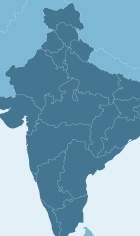

- Direct marketing remained the dominant distribution channel in the Indian life segment during 2010-2014, accounting for 50.3% of the new business direct written premium, in 2014 due to its cost-effective nature.
- Direct marketing follows the approach of company-owned sales team and has proved its effectiveness in creating customer loyalty. The share of new business direct written premium is expected to increase to 63.6% in 2019.
- Agencies was the second-largest distribution channel in Indian life insurance segment during 2010-2014, accounting for 38.2% of the segment’s new business direct written premium, in 2014.
- Agencies were the only distribution channel that sold life insurance prior to the emergence of private insurers in the country after the deregulation of the Indian insurance industry in 2000.
How well do you really know your competitors?
Access the most comprehensive Company Profiles on the market, powered by GlobalData. Save hours of research. Gain competitive edge.

Thank you!
Your download email will arrive shortly
Not ready to buy yet? Download a free sample
We are confident about the unique quality of our Company Profiles. However, we want you to make the most beneficial decision for your business, so we offer a free sample that you can download by submitting the below form
By GlobalData- The strong preference for agencies is primarily due to their large client base, strong brand reputation, and relatively low-cost sales forces. LIC, the largest life insurer in India in terms of gross written premium, had an agency network of 1.20 million as on March 2014.
- In India, there are two types of agent: independent and corporate. Independent agents or independent financial advisors have tie-ups with more than one insurer, while corporate agents are source policies from one insurer only.
- Bancassurance was the third-largest channel, with a new business direct written premium of INR116.8 billion (US$1.9 billion) in 2014, accounting for 9.1% of the overall segment. In 2013, IRDAI permitted banks to become licensed insurance brokers, enabling them to sell products from multiple insurance companies.
Source: Timetric IIC report: Life Insurance in India, Key Trends and Opportunities to 2019






